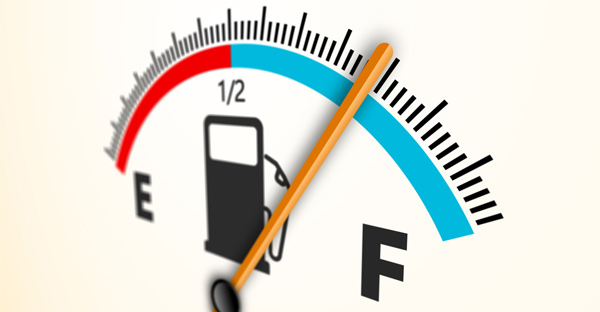

This article is an excerpt from an interview with CNS and Dan Benardot, PhD, RD, LD, FACSM, Professor Emeritus of Nutrition, and of Kinesiology and Health at Georgia State University.
Most of the recommendations for athletes and non-athletes, for people in general, are based on 24 hour intakes. If you look at the dietary reference intakes, for instance, they are in 24 hour units. If you look at protein requirements, they’re totals.
We’re increasingly realizing that’s not the kind of information that people really need, because the human body doesn’t wait until the end of the day to decide, “okay, you had enough protein, or you didn’t, or you had enough calories, or you didn’t, or you had enough folic acid, or you didn’t.” The body works in real time. I think increasingly we have to start looking at nutrient availability, as the body actually needs it, in real time. I think that’s what we’re seeing more and more.
A few years ago, The International Olympic Committee came out with a recommendation on relative energy deficiency in sport (RED-S). Basically it’s asking that for any activity an athlete does, do they have enough energy available at that time?… not at the end of the day. For example, if somebody needs 3,000 calories and they ate 3,000 calories at the end of the day you might say, “oh, great, they’re in perfect energy balance.” This is not the case if, as an example, they ate 3,000 calories for breakfast and didn’t eat anything the rest of the day. It could look as if they’re in good energy balance. But, how the body would actually deal with that, is not at all good, and they wouldn’t be in a good, real time energy balance.
The question becomes, not just for athletes, but for non-athletes as well, how can we deliver nutrients in a way that the tissues can most optimally use the nutrients and energy?
For example, in terms of protein and athletes, years ago we used to say, “this athlete needs 1.7 grams per kilogram of mass – of protein.” If it’s a hundred kilogram athlete you’d say, “okay, they need 170 grams of protein for the day.” When you look at their total protein intake and see it is greater than 170 grams we’d say, “okay, good they’re getting a lot more than that, and so their protein requirement is fully satisfied,” but that may not actually be adequate, even though there’s an apparent excess level of intake. It may not be enough to satisfy need. I’ll tell you why.
I work with athletes who are sometimes very large, like football players. It was pretty common for them to have like, 150 grams of protein at breakfast. Then, they might have another 150 grams of protein at dinner. But we’ve increasingly found, and the literature supports, that 30 grams of protein may be the most that a human being can actually process at once. If you look at that you go, “wow,” and they have 150 grams. What does that mean? That means really, that of the 150 grams that they had for breakfast only 30 grams is usable as protein. The rest is denitroginated. It helps to satisfy the caloric requirement for the day, but you can’t really add it in as part of satisfying the protein requirement.
So that 150 grams all the sudden gets reduced down to 30 grams. Now there’s another complication. You wonder, “well, what if they have that 30 grams of protein and they’re in a severe energy balance state (The basic components of energy balance include energy intake, energy expenditure and energy storage) at the time that they had the protein?” And if they’re in a severe energy balance state maybe none of that protein will be used as protein. It’ll all be used to satisfy the energy requirement instead of a protein requirement, because for protein to be used anabolically you have to have enough energy around so that can happen. So now you’ve potentially gone from 150 grams to zero.
If you look at it in the (old) ways (compared to the current ways) we’re starting to realize the standard for looking at what athletes actually require, and how to calculate what they require it is not working. Here is an analogy for the (current) standard protocol… “Do you drive a car? Have you ever put gas in it? Okay. So I want you to imagine that you’re driving from Ithaca, New York to Atlanta, Georgia. You look at your car and you say, “Look, car. I want you to take me to Atlanta. I promise I’ll give you all the fuel you need for the trip once we get there.” You can’t do that with your car, just can’t do it. A lot of people post-load their intake. If you look at the way people eat their meals, you know, I might have a little bit of breakfast, or I might skip it altogether. Might have a little lunch, but then at dinner they have a huge amount. Right?
At the end of the day it might look (numerically) as if they’ve satisfied their energy requirement, but they haven’t. So they’ve catabolized their tissue during the day, when you don’t have enough energy availability, your body thinks you’re in a fasting mode so you tend to break down more muscle than fat. You become excessively energy efficient, and now you’ve become fatter and fatter because you’re eating less. The standard 24 hour protocol for energy doesn’t work. It doesn’t work for your car and it certainly doesn’t work for us.
I started realizing it a long time ago, when I was working with an Olympic team and I saw that they had practices that went on for five hours, five and a half hours sometimes. They didn’t eat or drink anything. They weren’t allowed.
I looked at that and thought, “wow this is interesting.” You know, after three hours they’re starting to get grumpy. The coaches are starting to get grumpy as well because they weren’t eating or drinking anything either. You do the calculations for them and you go, “wow.” It appears as if they’re satisfying their nutrient requirement needs. Sure, it appears that way.
But, when you look at their behaviors and you look at the fact that towards the end of practice a lot of athletes were purposefully trying to injure themselves so that they could get out of practice, because they were feeling so miserable, then you realize well, okay it might look as if they have enough nutrition, but at that moment they just don’t have enough.
To read more from this interview please visit:
Drinking Coffee for Energy? Why Not Eat a Snack?
NFL & Olympic Nutritionist: How Food Affects Athletic Performance
Copyright 2025 Center for Nutrition Studies. All rights reserved.
Deepen Your Knowledge With Our
Plant-Based Nutrition
Certificate
Plant-Based Nutrition Certificate
- 23,000+ students
- 100% online, learn at your own pace
- No prerequisites
- Continuing education credits











